 A Tour of Hyogo's Terroir
A Tour of Hyogo's Terroir
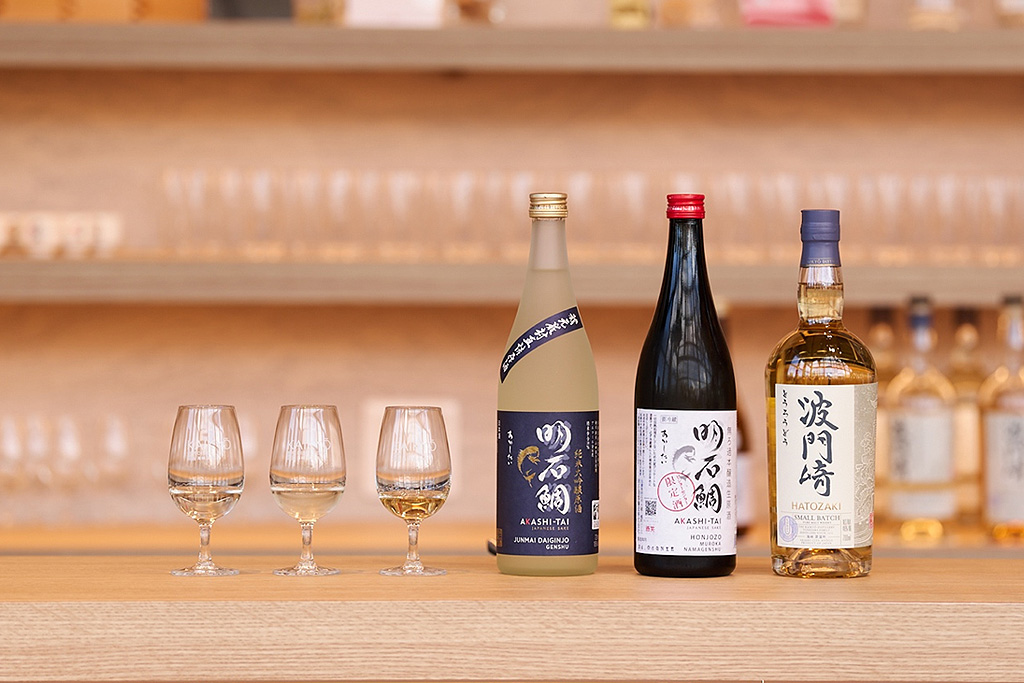
“Akashi Tai” Junmai Daiginjo Genshu, which has won numerous awards, the Visitor Center exclusive unfiltered Honjozo Nama Genshu “Akashi Tai” (subject to change depending on the season), and the Pure Malt Whisky “Hatozaki.” The Japanese sake “Akashi Tai” has been served on the luxury cruise ship Queen Elizabeth for many years.
Akashi City, located in the southern part of Hyogo Prefecture, is known as the “City of Time” because it lies on the Japanese Standard Time meridian (135° East longitude). It is also a “City of the Strait” with beautiful views of the Seto Inland Sea and the world’s largest suspension bridge, the Akashi Kaikyō Bridge, which crosses the Akashi Strait. It is blessed with marine products grown in the area.
Akashi Shurui Brewing Co., Ltd. was established in 1918 in this region. Initially, it only produced and sold shochu, but later expanded into sake production and, in its 100th year, obtained licenses for whiskey and spirits. Today, the company produces sake, whiskey, gin, and liqueurs that take advantage of the local land and climate of Akashi, and exports to 35 countries worldwide.
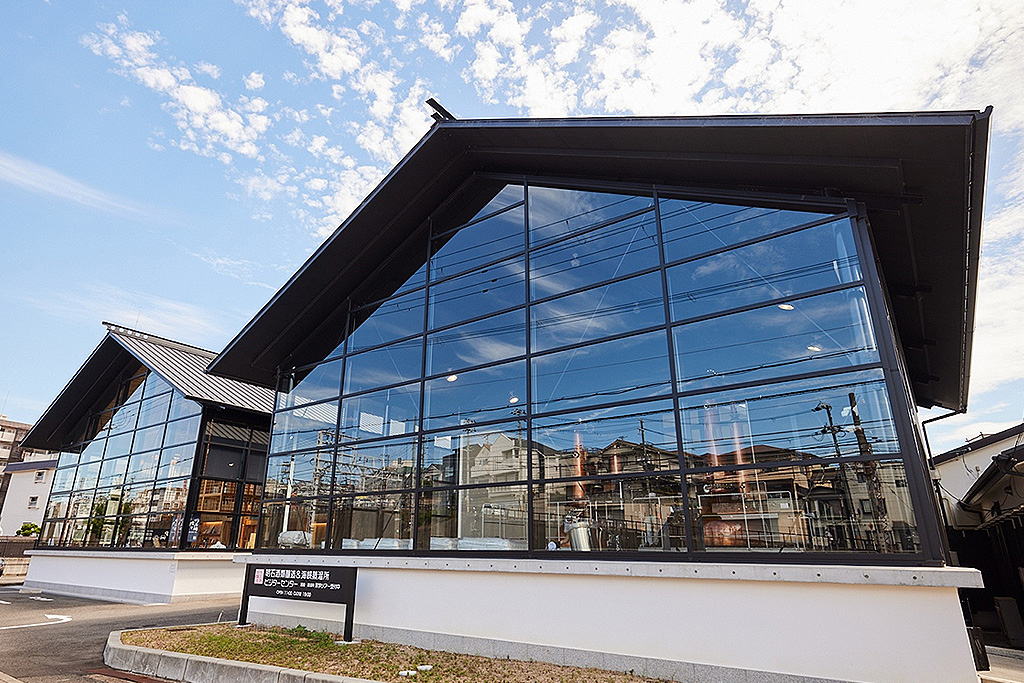
The Akashi Shurui Brewing & Kaikyō Distillery Visitor Center
The “Akashi Shurui Brewing & Kaikyō Distillery Visitor Center,” with its striking appearance, opened in the summer of 2022 as a place for disseminating and experiencing Japanese culture. At the “Akashi Shurui Brewing & Kaikyō Distillery Visitor Center,” visitors can enjoy sake tastings and purchase products. The center also houses the production sites for the internationally popular sake “Akashi Tai,” whiskey, and craft gin. Tours and events are held regularly (reservations can be made via the website; however, please note that tours are not available until February 2025 due to factory renovations).
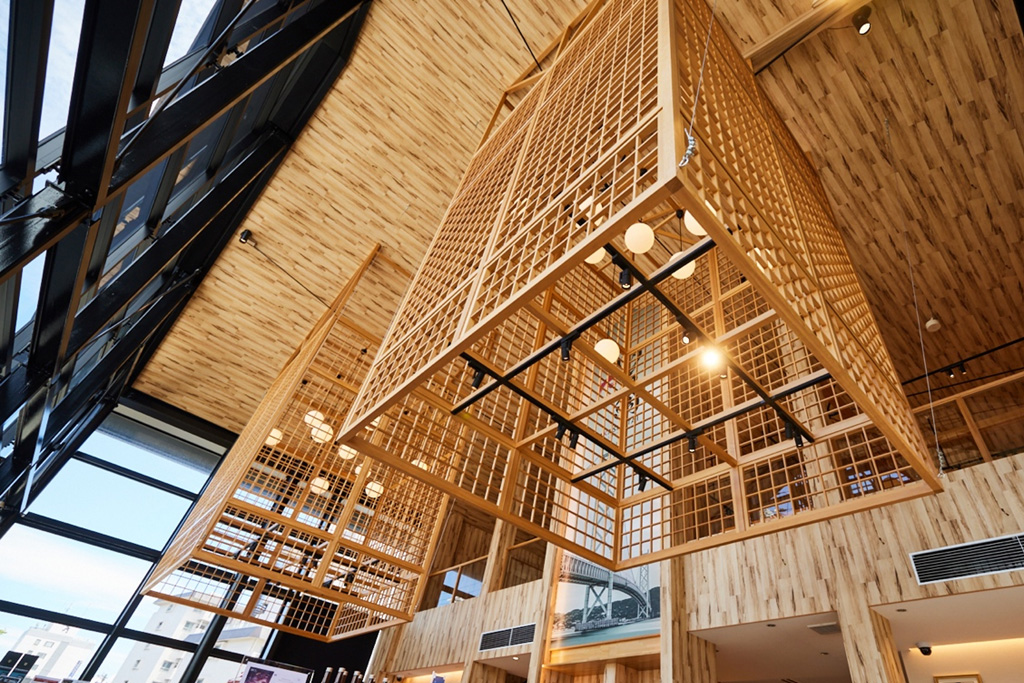
Inside, the building features an open, Japanese-modern architectural style that evokes a sense of “tradition and innovation.”

Hitoshi Yonezawa, who is both the toji (master brewer) and the CEO of the company.
Turned his attention to overseas markets in 2005, a time when Japanese sake was not yet widely known around the world. Yonezawa first focused on London, a hub of information in Europe, and began his sales efforts there. His target was not Japanese-owned restaurants or businesses where Japanese trading companies were involved, but local markets. He called every number listed in the London phone book, making international calls and, whenever he secured an appointment, he would jump on the next flight. “If they say it’s delicious, we can become famous.” He had confidence in the taste of his sake. His persistent efforts paid off, and with the help of word-of-mouth in the local community, “Akashi Tai” can now be found in over 200 stores, including high-end department stores, supermarkets, and pubs across the UK.
After expanding his overseas market, Yonezawa began thinking about how to share “Japanese sake and the culture and identity that support it” with the world in a deeper way. The “Akashi Shurui Brewing & Kaikyō Distillery Visitor Center” became the base for realizing that dream.
“With the Akashi Kaikyō Bridge by the sea, delicious fish to catch, and Awaji Island, a resort area of Kansai, nearby, I thought that if people could experience the local charm of Japan and learn about the stories behind the sake, it would help increase the number of fans of Japan.
“A highlight of the visitor center is the “Tour of the Brewery that Makes Akashi Tai Sake and the Kaikyō Distillery.“

The rice used to make Japanese sake is the king of sake rice, Yamada Nishiki. The best quality of this rice, grown locally in the town of Yoshikawa in Ono City, is used 100%.
The production site of “Akashi Tai,” which exports more than 90% of its sales overseas, has three rooms dedicated to making koji (the mold used to ferment rice). In the past, sake brewing was done in the traditional “kanzukuri” method, where the toji (master brewer) and kurabito (brewery workers) would live in the brewery and brew sake from October to March. Today, however, with the installation of cooling equipment, “four-season brewing” is possible, allowing sake production year-round. The toji and kurabito are artisans and guardians who protect the unique taste of their sake.
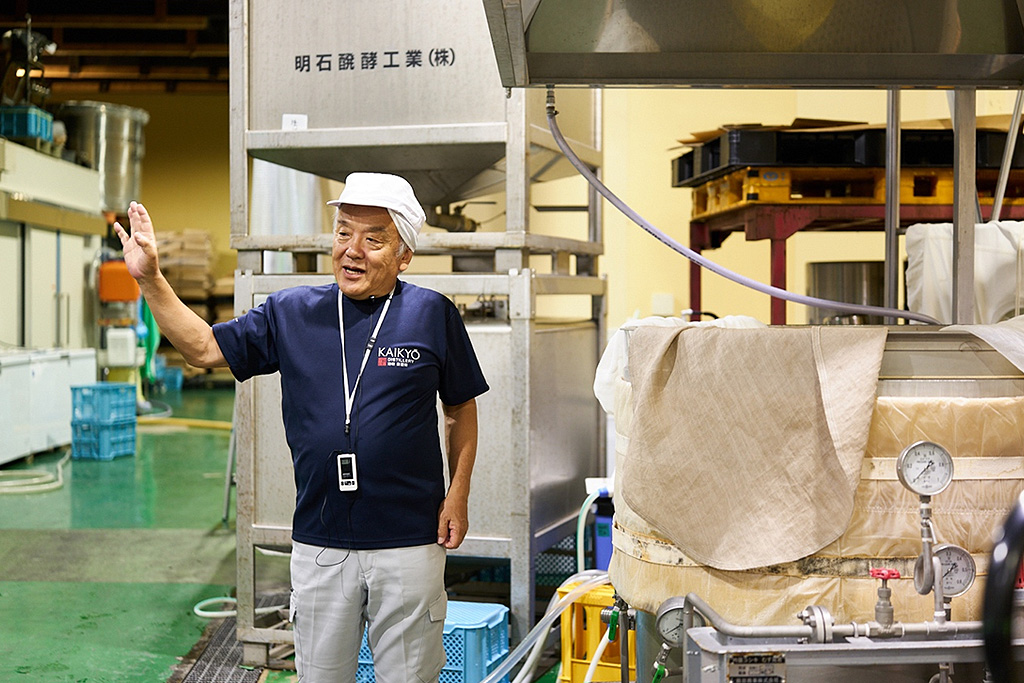
On the tour, Yonezawa, the toji (master brewer), will personally guide visitors.
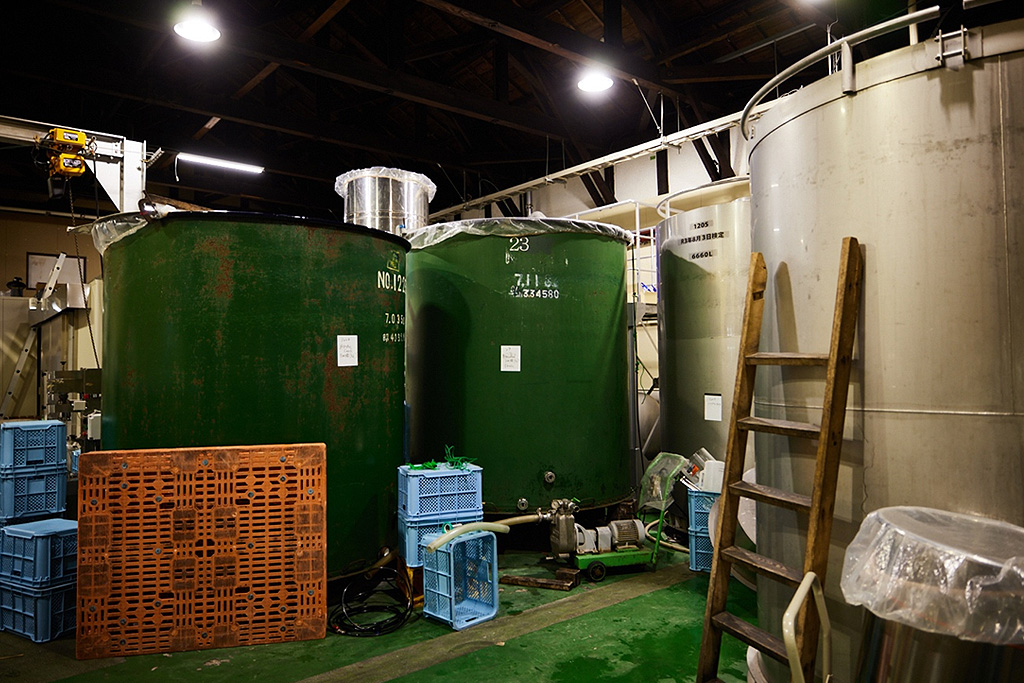
The polished rice is inoculated with koji, and brewing water is added. It is then fermented in a stainless steel tank for 2 to 4 weeks.
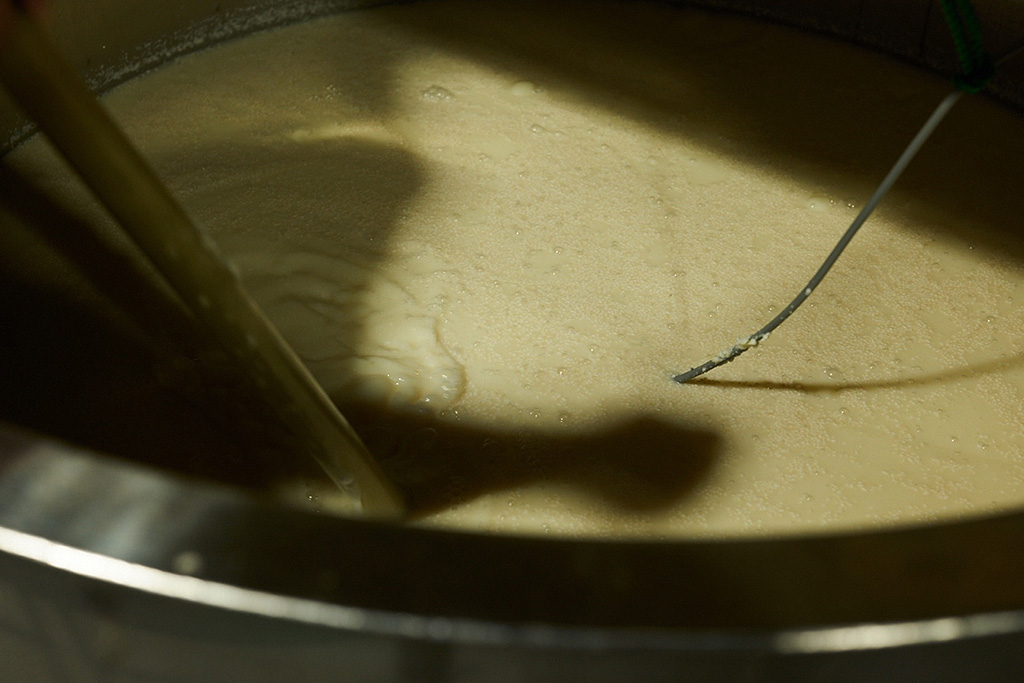
The mash in fermentation. This is a crucial step in determining the quality of the sake. A long stick called a “kaibou” is used to carefully stir the mash.
After delicate processes such as koji making, fermentation, and filtration, the sake is completed. Combined with the rich natural environment of Akashi’s sea and mountains, and the well-balanced climate of temperature and humidity, these elements come together to create the unique character of “Akashi Tai.“

The whiskey fermentation tanks are four in total, a combination of stainless steel and wooden barrels.
Stepping into the whiskey production area, where barley is used as the raw material instead of rice, the scent changes. Currently, Akashi Shurui Brewing produces three types of whiskey, having learned distillation techniques at the Torabeg Distillery on the Isle of Skye in Scotland, and making the whiskey from the mashing process onward.
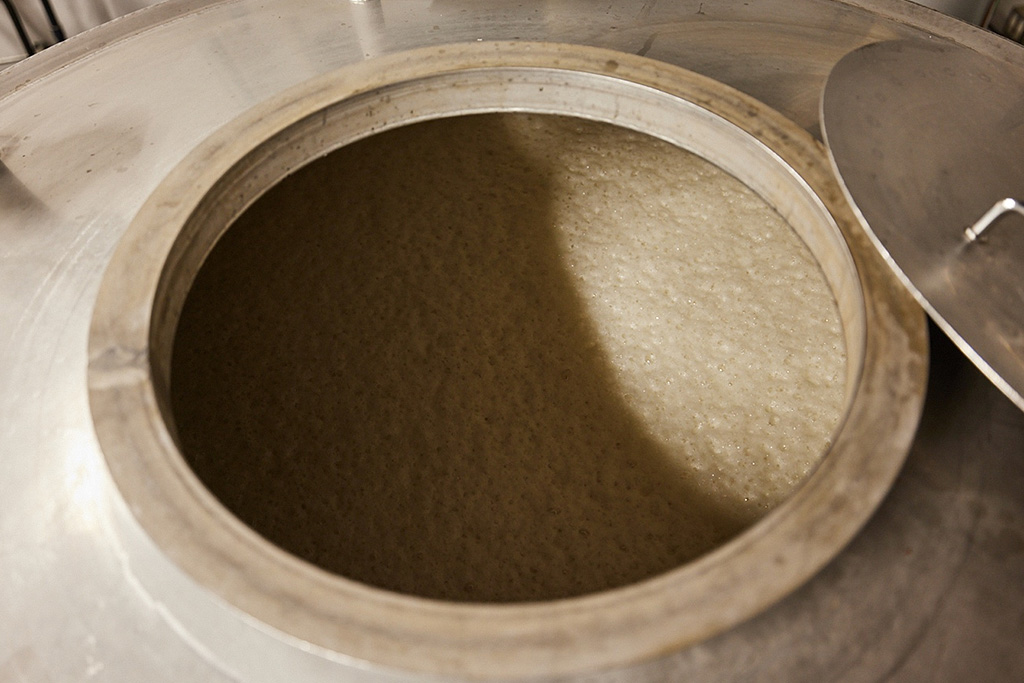
Unlike sake, whiskey is not stirred. Yeast is added to the mash, and it ferments for 96 hours.
Distilled spirits go through the processes of mashing, fermentation, distillation, and aging, and their flavor can change significantly depending on the climate and terroir. While the distillation technique is of European origin, the traditions of Japanese sake brewing and the climate of Akashi combine to create the unique and rare flavor of Japanese whiskey.
Once fermentation is complete at the sake brewery, the mash is transferred to the distillation building to be distilled into a high-proof spirit.

Using two pot stills that turn amber with use, the distillation process takes about 6 hours.

Observation of the distillation process is done through the ‘sight glass’ located in the middle of the neck.
From fermentation to distillation takes one week, followed by about three years in the barrel. Japanese whiskey, with its attention to detail and careful finishing, including its aroma, is fruity and easy to drink.
“While it may not match the boldness of the originals, it has a uniquely Japanese, elegant feel. There is no right answer when it comes to a luxury product, so I make it with the intention of distilling personality.”

The single malt is expected to be released around 2027.
After the brewery and distillery tour, there will be a tasting event at the visitor center bar. You can taste four different types.

Tasting can be done even without participating in the tour.

A lineup of popular products from Akashi Sake Brewing is displayed. The tasting fee is refunded when you make a purchase.
Akashi Sake Brewing & Kaikyō Distillery Visitor Center
Address: 1-3 Okura Hachiman-cho, Akashi City, Hyogo Prefecture
Phone: 078-919-1087
Business Hours: 11:00 AM – 5:30 PM
Closed: Tuesdays, 2nd and 4th Wednesdays
Website: https://www.akashi-tai.com/jp/